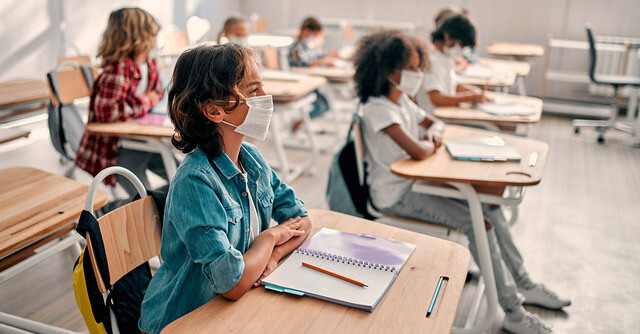COVID Mitigation in K-12 Classrooms: Can’t We Just Open the Windows?

The enVerid team just wrapped up a webinar series on COVID & Indoor Air Quality and all sessions are now available online. We had three great discussions with experts at the leading edge of IAQ research. The guest speaker for our second webinar was Prof. Bill Bahnfleth, Chair of the ASHRAE Epidemic Task Force and Professor of Architectural Engineering at Penn State. At the end of the session, there was a question for Dr. Bahnfleth regarding K-12 schools and classroom ventilation. And because it’s a question we hear so frequently during our conversations with schools lately, we thought we’d share it here. When it comes to quick solutions to keep clean air flowing through the building, schools often wonder, “Can’t we just open up the windows?” Well, the answer is…it depends.
Experts recommend that during the COVID-19 pandemic, classrooms achieve at least 5 total air changes per hour (ACH). According to Harvard T.H. Chan School of Public Health, 4 ACH is good, 5 is excellent and 6 is ideal. Increasing outdoor ventilation is often the first strategy facility managers consider to make that happen. If school buildings have operable windows, opening them even just a few inches might be a quick and easy way to increase air changes. However, the amount of air that comes inside depends on outdoor winds, temperature gradients and whether fans are being used to exchange air. As Dr. Bahnfleth explained during the webinar, “Just opening a window is unreliable because of the dependence on other driving forces like pressure. Opening one window may not do anything for you. You may have air going out instead of coming in.”
He then added another risk to consider when relying on open windows for increased outdoor ventilation. “The question becomes — is that space going to be comfortable enough in the middle of winter or are people just going to at some point say, ‘This isn’t working. I’m going to shut the windows.’” He points out that people are more inclined to open and close windows for comfort than for air quality.

If opening windows isn’t the right solution to achieve the target of 5 ACH, schools have alternative strategies to consider. Schools with an HVAC system should ensure at least the minimum outside air ventilation as per ASHRAE 62.1 and install MERV-13 or higher efficiency filters on the HVAC system to clean recirculated air. Schools that don’t have an HVAC system that can bring in outside air or that can’t upgrade to at least MERV-13 filters to safely clean the recirculated air, should bring in as much outside air as possible and supplement with in-room HEPA air cleaners in every classroom.
The enVerid Air Purifier is an in-room, commercial-grade, ceiling mounted True HEPA air purifier that’s proven to capture 99.99% of virus particles, including a surrogate for the virus that causes COVID-19. It provides schools with a cost-effective way to boost air change rates by 4-5 times per hour. Compared to portable air purifiers on the market, these ceiling-mounted units save valuable floor space in classrooms, allow for more flexible room placement that minimizes noise and optimizes air flow.
So while opening windows may be a piece of your school’s comprehensive COVID-19 mitigation strategy today, in room air cleaners like the enVerid Air Purifiers can be another part of the solution to future-proof your school by reducing the risk of airborne viruses and other harmful pathogens today, through the winter and for years to come.
We invite you to access Bill’s full presentation, along with the rest of the webinar series here.

Doug Engel
Doug Engel is SVP Sales and Marketing, enVerid Systems
Subscribe to our blog



